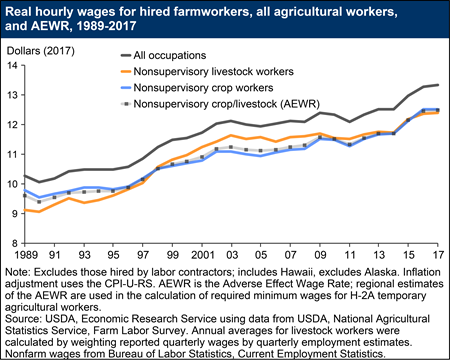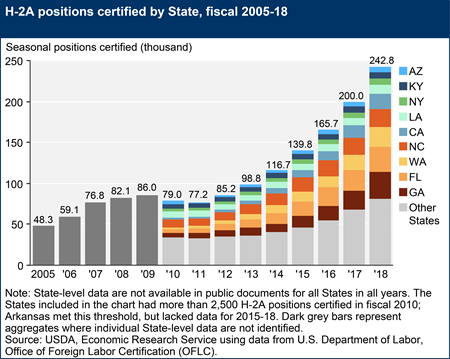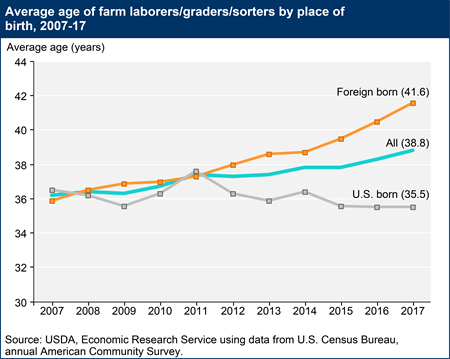With increasing urbanization around the globe, the agricultural sector is facing an unprecedented crunch in labor costs and acquisition. Countries like the US, New Zealand, and Canada are already facing the farm labor crisis. Labor shortages and aging populations are some important factors that we need to consider when discussing the changing issues of labor costs.
In this overview we will look at some of the most challenging factors facing growers and producers in the management of farm labor. We will also look at some of the best ways to use technology to your advantage, increase efficiency in managing labor, wages, and working conditions.
Rising Labor Costs
Farmers in Canada and the United States have been reporting challenges in hiring farm workers for years. Typically seasonal, and involving long hours of manual labor, agricultural employers have struggled to maintain the employees they need to manage growing, production, harvesting, and processing. The struggle to find employees in the agricultural sector has forced many farmers to raise labor wages in an attempt to secure more farmworkers. The introduction of new laws associated with minimum wage and paid overtime incite regular debates in the agricultural sector. While many of these new laws have benefited farm laborers, they may also add complications for farmers tracking their labor costs and finding efficient ways to manage them without negatively affecting production.

Payment Models
The standard payment system for many agricultural workers is measured in $/hour, but how efficient is it? Looking at employee costs, paying a worker on an hourly basis can have costly implications. Imagine paying two laborers of different productivity at the same hourly rate. At a glance, this form of payment seems more straightforward and manageable as all workers get paid the same regardless of how hard they work. However, using other methods like pay-per-piece rate proves to have significant advantages for employee costs. Piecerate, or pay-per-piece, is a method of payment where a farm worker is paid based on how many units they complete rather than how long they work in the fields. For example: bins harvested, acres mowed, or trees pruned. Introducing piecerate to your farm can increase employee productivity and help you identify areas of improvement, as well as motivating your workers to perform to their best. When paying piece rate, employers need to be aware of the calculations required to ensure they are meeting the minimum wage. You can check out our recent article on how and when to best use piece-rate, and the calculations and records necessary to comply with regulations in your region.
Immigration Constraints and Labor
In 2007 the US reached one of the highest percentage of immigrants in over two decades, peaking at 12.2 million with almost half of them hired in farms or in the agricultural industry. A 2014 survey by the PEW research center showed that 26% of farm workers in the United States were undocumented or unauthorized to work in the United States. It is evident that much of the US depends on undocumented workers to pick fruits and vegetables. However, with the recent stiffening of immigration laws, it is becoming more and more difficult for immigrants to enter the US.
In order to outsource laborers from outside the US, farmers must fill out the H-2A temporary agricultural workers form that allows you to hire foreign employees to fill temporary or seasonal jobs such as harvesting or planting. The H-2A application program is intensive and requires a farm owner to prove the shortage of US workers before being allowed to bring in foreign employees. The United States Department of Labor regulations state:
The Department must determine that:
1. there are not sufficient able, willing, and qualified U.S. workers available to perform the temporary and seasonal agricultural employment for which nonimmigrant foreign workers are being requested; and
2.employment of H-2A workers will not adversely affect the wages and working conditions of similarly employed U.S. workers. The statute and Departmental regulations provide numerous worker protections and employer requirements with respect to wages and working conditions. The Department's Wage and Hour Division (WHD) has responsibility for enforcing provisions of worker contracts.”
In recent years the number of certified H2-A positions have seen a dramatic increase as farmers attempt to compensate for the lack of homegrown labor available to them.

In Canada you can apply through the Seasonal Agricultural Worker Program which is a similar process.
Aging Farm Employees
The average age of hired farm laborers around the world is sharply increasing, introducing new challenges in the labor market. Farmers in the fruit and vegetable sector are already feeling the hit as the average age of farm workers in 2016 reached 40, and today's estimates suggest it may now be as high as 58 years.

Migrant workers, who make up much of the farm laborers' population in the US, are aging as well, and migration laws have made it harder for new migrants to enter the country. In the coming future farm owners may have to decide whether to work with fewer employees, or to try to bring in more workers using H-2A.
Increased Production Costs
Demand for food steering the need for production means that other factors affecting production costs will increase. As these costs go up key crop input prices, such as fertilizers, also rise. Take a look at corn - one of the most popular crops in the world and the largest consumer of fertilizers (both per acre and in total). The price of fertilizers in this case is crucially important, and whenever they go up farm owners tend to cut costs on employees to stay afloat. In 2006 China and India were consuming almost 70% of the world’s fertilizer. If either of these countries were to increase fertilizer consumption by just 5%, the global prices would have to adjust, which could have huge impact on growers worldwide.
Many farmers incur extra transportation costs for workers living offsite. There are farm labor contractors (FLCs) who do all the legwork of connecting farm laborers to farmers - for a fee. They are key actors in the U.S and Canada agricultural markets. For farm owners this option is barely the most cost-effective, since the FLC will be managing your entire worker’s wages, transportation costs, and on top of it, you will be paying extra for those services. In Canada employers must provide no-cost transportation to and from the worker's housing location and work location. Additionally, the employer must pay the round trip transportation fees to and from the worker's home country up front, in advance of the employee's arrival in Canada.
Conclusion
As the face of labor continues to change around the globe, adaptability will be the key to maintaining productivity. Employers will need to use all the tools at their disposal to both attract and keep the labor they need. Piece-rate pay, wage increases, foreign labor, and even automation may be required to keep up with the demand, and efficiency will be key. Whether you prefer to pay piecemeal or hourly, Croptracker farm management software can provide efficiency to help you manage the labor crunch, and to eliminate paperwork in your operation's payroll department. Croptracker has a solution for your operation, from large to small. Contact us today to see how we can help your organization simplify your payroll process, piecemeal or otherwise.
Interested in learning more about Croptracker? Learn more about our Farm Management Software, or book a demonstration to schedule a meeting with our product experts.
And as always, if you're ever stuck, never hesitate to e-mail us at support@croptracker.com or Live Chat with us by clicking the green speech bubble ![]() in your bottom right-hand corner. We're always happy to help you make the most of Croptracker to make your farm more efficient, safer, and more profitable!
in your bottom right-hand corner. We're always happy to help you make the most of Croptracker to make your farm more efficient, safer, and more profitable!


